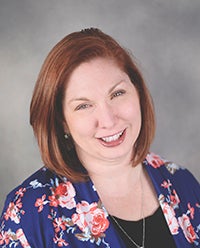Live United: Learning from other United Ways throughout the state
Published 8:45 pm Friday, June 7, 2024
|
Getting your Trinity Audio player ready...
|
Live United by Erin Haag
Twice a year, United Ways from around the state gather for a conference. It’s always difficult to take the time to get away, but it’s also good to connect with others. When an organization is as hyper-localized as local United Ways are, it can be easy to forget that we’re really part of a larger network. This year, I was reminded that not only is there a United Way network, but there’s also a really good hunger relief network. For the United Way conference, I was asked to present as part of the Innovation series about the Welcome Pantry.
With the conference being in Owatonna this year, I asked Dom Korbel, executive director of Community Pathways of Steele County, to join me.
Last week, Dom finally made it over to the Welcome Pantry for a tour. The premise was to prepare for our presentation, but really, we spent our whole time talking about our pantries.
We talked about ordering apples, and he admired our shelving in the backstock room. We talked about policies and processes, and what we’ve tried and haven’t tried. The more we talked, the more we remembered that we experience the same issues, the same challenges. He made some suggestions to me, and I was pleased to be able to offer him some recommendations as well. It’s always nice when you’ve gotten to the point where you can offer something in return.
Some of what we talked about was tangible — how and where we order our volunteer lockers, and what platforms we use for scheduling volunteers, etc. The bigger challenges though were the polices and processes. A good chunk of the conference was training on diversity and inclusion. Discussions were held about how nonprofits are a business, but it’s a business that needs to keep people at its center. It’s a business that might need to consider how standard business protocol can sometimes inadvertently cause barriers to access and be an equity issue. There’s a lot of nuance on how to ensure that we’re holding ourselves and others accountable for best practices in an equitable manner.
There were two themes that ran through the conference. We’d listen to a keynote speaker about how people were more important than policies and procedures. The very next session would be a deep dive into policy and procedure development. Here’s the thing though — those policy and procedure strategies are essential to have in place so you can focus on the people. It’s not choosing one or the other, it’s maintaining the balance between the two. It’s developing the systems so that you can empower people. Empower staff, empower volunteers, empower board members, empower community members.
The process we used to develop the Co-Design process is a perfect example of ensuring our systems help us focus on the people. All of our operational decisions go back to being in compliance with state and federal guidelines, and the spirit of our Co-Design Themes. Sometimes they seem terribly corporate. Sometimes decisions have to be made at a director level, that might not always make sense to people. We’re not always able to go into deep details about those decisions. Those are the hard decisions, the ones that can keep me up at night.
Those are the decisions that are months in the making, and where I hope that people recognize there’s more to the story, and remember that our hearts are involved in the decision process as well. The decision makers are people too and are volunteering their time because of the people we’re serving.
The past several months, I’ve been leaning hard into the processes. Let’s get things on paper, get things clearly documented, so everyone’s on the same page. It can be something as simple as volunteer recognition. A few months ago, I challenged my staff to develop a volunteer recognition program, because we have amazing ones. It’s still a work in progress, but it’s a summer bucket list. It wouldn’t seem something as heart-driven as showing gratitude is a “procedure,” but it is. Maybe “system” would be a better word, but it’s still an operational process. It isn’t cliché or taken lightly — we truly do appreciate our volunteers, and I want them to feel that. When we’re busy racing in different directions, it can be easy for us to express appreciation to someone, and we don’t realize that someone else wasn’t there that particular day. A system is set in place to make sure we’ve taken the time to connect.
A few weeks ago, I called a volunteer who had surgery. We talked for 15 minutes, but she was surprised I called her, and kept saying how nice it was that we checked on her. I enjoyed our conversation, and I look forward to seeing her when she returns next week.
The United Way Board of Directors is actively seeking members to join us. We’re planning a strategic retreat, and we’re keeping people at the heart of our process. If you’d like to consider bringing your voice to the table, we invite you to give us a call to learn more. You can reach us at 507-373-8670.
Erin Haag is the executive director of the United Way of Freeborn County.



